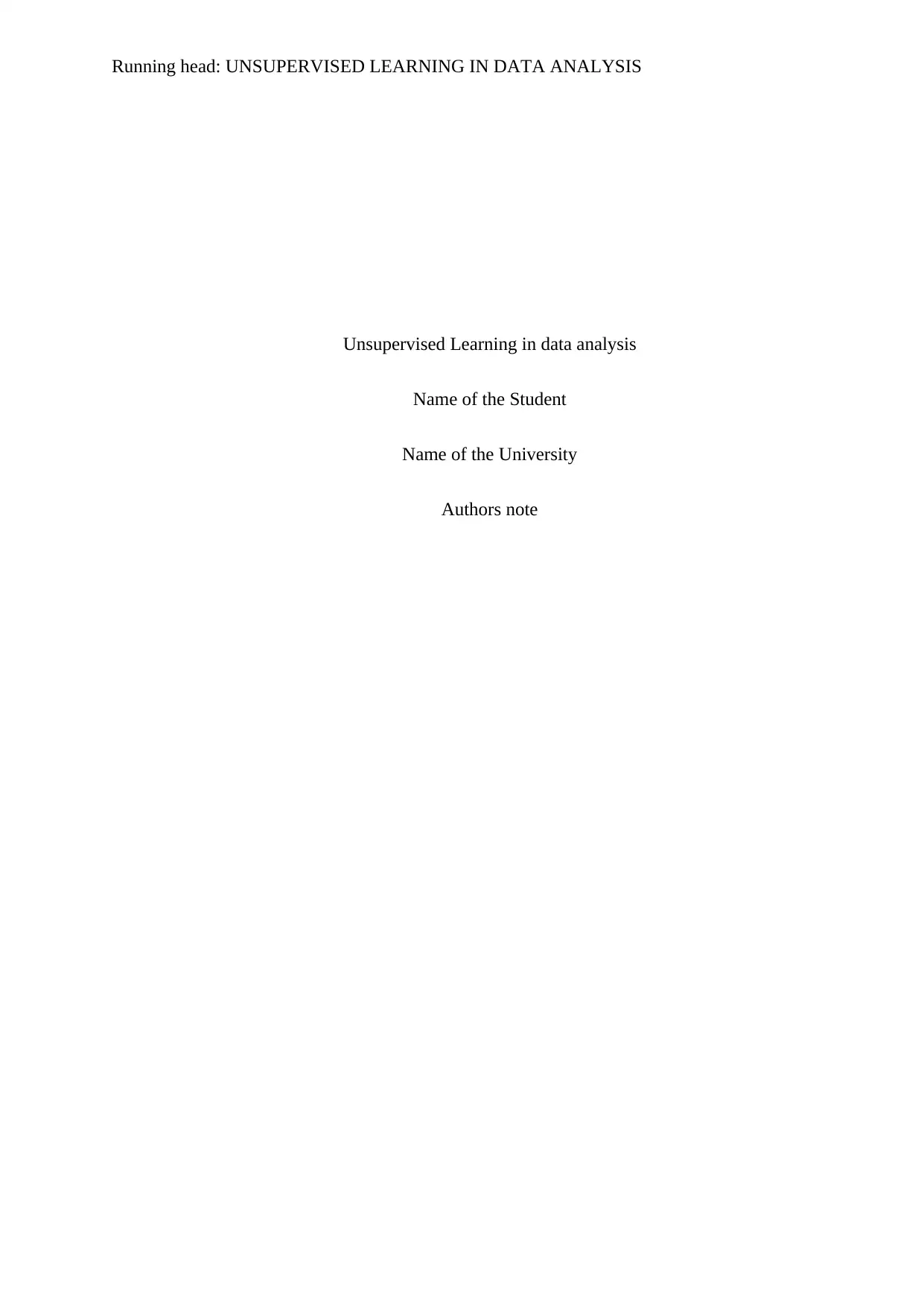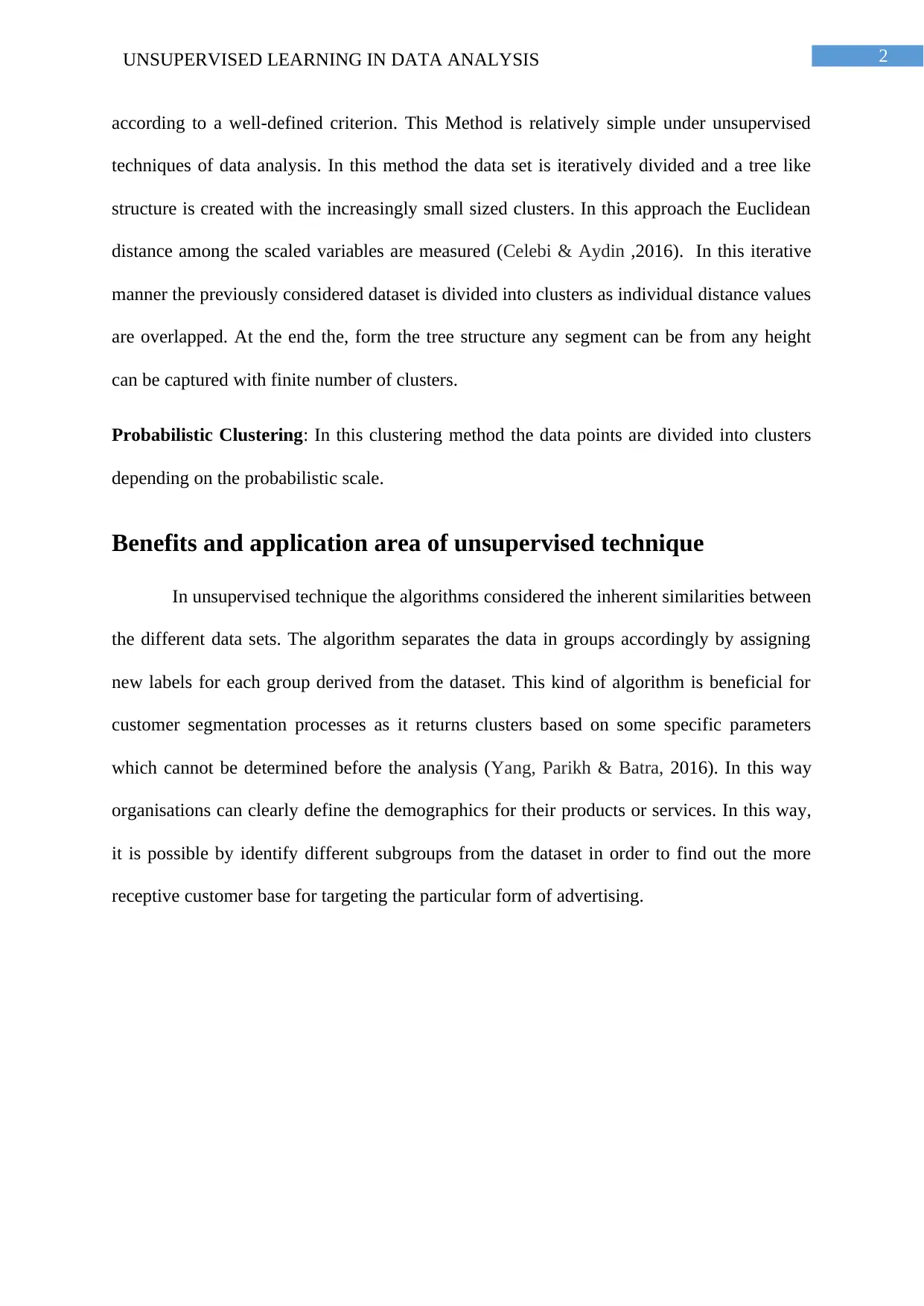Unsupervised Learning in Data Analysis: Grouping Objects and Data
VerifiedAdded on 2023/04/22
|4
|789
|233
Essay
AI Summary
This essay delves into the application of unsupervised learning techniques in data analysis, focusing on clustering methods for grouping objects and data within unlabelled datasets. It highlights the use of clustering to isolate data into multiple groups based on attribute similarity, emphasizing the roles of dimensionality reduction and exploratory analysis. The essay contrasts unsupervised learning with its supervised counterpart, noting its inherent complexity and subjectivity due to the absence of predefined goals. It elaborates on three primary clustering types: K-Means Clustering, Hierarchical Clustering, and Probabilistic Clustering, detailing their methodologies and benefits. Furthermore, it discusses the advantages and application areas of unsupervised techniques, particularly in customer segmentation, where algorithms identify inherent similarities between datasets to create new labels for distinct groups, aiding organizations in refining their understanding of customer demographics and targeted advertising strategies. The essay concludes by referencing relevant research in the field, underscoring the practical implications of unsupervised learning in data-driven decision-making.
1 out of 4










![[object Object]](/_next/static/media/star-bottom.7253800d.svg)